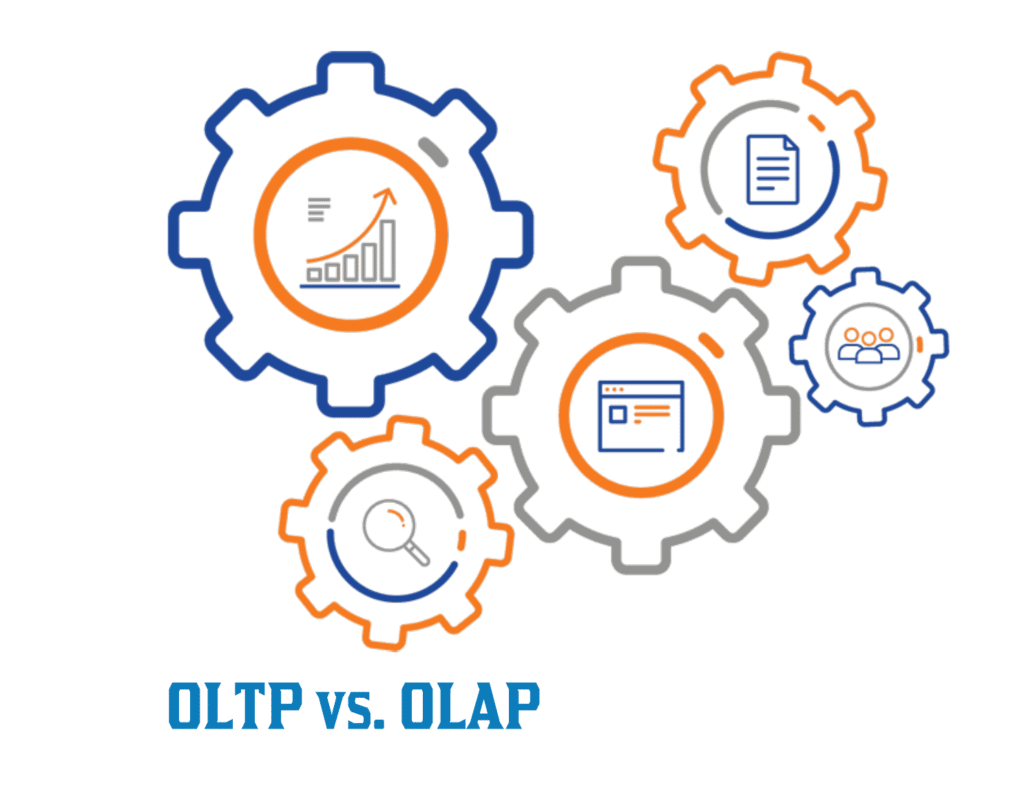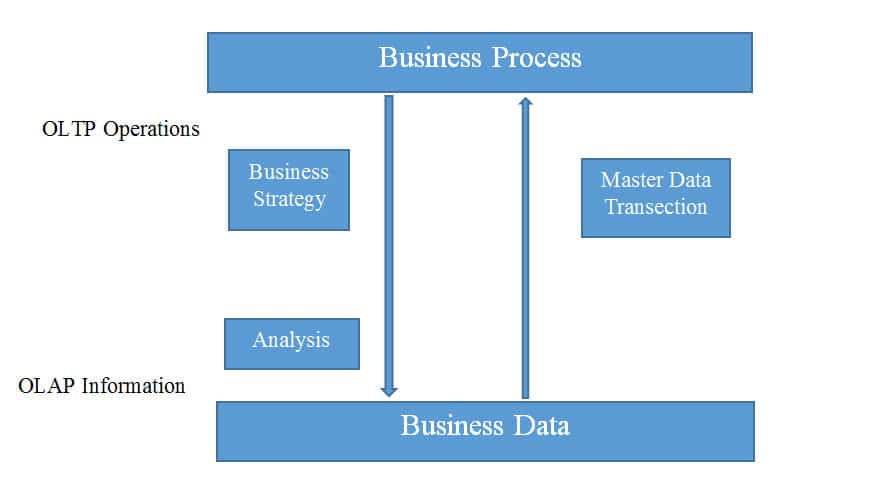Blog > OLAP vs. OLTP in Data Warehouse

What is OLAP?
OLAP stands for online analytical processing; it’s a category of software data for business decisions. OLAP allows users to analyze database information from multiple database systems online. A data warehouse is an example of an OLAP system.
The uses of OLAP systems are as follows:
A company might compare their sales in January with February then compare those results with another location stored in a separate database.
Amazon analyses purchases by its customers to produce a personalized homepage with products that are likely to interest their customers.
Advantages of OLAP System:
- OLAP creates a single platform for all types of business analytical needs.
- The fundamental advantage of OLAP is the consistency of data and calculations.
- Effectively apply security limitations on clients to conform to guidelines and ensure delicate information.
Disadvantages of OLAP System:
- Implementation and maintenance are dependent on IT professionals because the traditional OLAP tools require a complicated modeling procedure.
- Moreover, OLAP tools need cooperation between various departments to be useful, which might always be impossible.
What is the OLTP System
OLTP or Online Transaction Processing, shortly known as OLTP, supports transaction-oriented applications in a 3-tier architecture. OLTP administers the day-to-day transaction of an organization. The primary objective of the OLTP system is data processing, not data analysis.
Example
An example of an OLTP system is an ATM center, which assumes that a couple has a joint account with a bank and one day both simultaneously reach different ATM centers at a precisely same time and want to withdrawal the total amount present in their account. However, the individual that finishes the confirmation cycle first will have the option to get the money.
In this case, the OLTP system makes sure that the withdrawal amount will never be more than the amount in the bank. The key to note here is that OLTP frameworks are improved for conditional prevalence rather than data analysis. In addition, some other OLTP systems are online banking, online ticket booking, sending a text message, order entry, and many more. Online ticketing means that if two or more persons are booking a ticket in an airplane, the ticket will be reserved for the first in this process: first-come-first-serve the fastest fingers first.
Advantages of OLTP System
Here are some significant advantages of the OLTP System:
- It administers the daily transactions of an organization.
- It widens the customer base of an organization by simplifying individual processes.
Disadvantages of OLTP System
The significant disadvantages of the OLTP system are as follows:
- If the OLTP system faces hardware failures, then online transection gets severely affected.
- OLTP System allows multiple users to simultaneously access and change the same data, which often created an unprecedented situation. It is a significant disadvantage of the OLTP system, so an organization using or following this procedure should be careful.
OLAP vs. OLTP

Furthermore, OLTP and OLAP systems are divided into different factors, which are business strategy master, data transactions, and analytics. OLAP is an information (Business data warehouse) based system, and OLTP is an operation (Business process) based system.
We can differentiate OLTP and OLAP based on some parameters such as:
- Process
- Functionality
- Method
- Back-Up
- Style
- Query
- Table
| Parameters | OLAP | OLTP |
| Process | Characterized by a large volume of data | Characterized by a large number of short online transactions |
| Functionality | Online database query management system | Online databased modifying system |
| Method | Uses data warehouse method | Uses traditional RDBMS method |
| Query | Mostly uses select operations | Uses insert, update and delete information from a database |
| Style | It can integrate different data sources for building a consolidated database | It is designed to have a fast response time, low data redundancy, and normalized |
- In the case of OLAP, different OLTP databases become the source for the data of OLAP.
- In the case of OLTP, the OLTP and the transactions are the sources of its data.
- Another significant difference between OLAP and OLTP is backup, as OLAP needs a backup from time to time. However, backup is not essential compared to OLTP; besides, a complete backup of the data combined with incremental backups is essential.
Key Differences
| OLAP | OLTP |
| It is a category of software tools that analyze data stored in a database. | It supports transections-oriented applications in a 3-tier architecture. |
| It creates a single platform for all business analysis needs, including planning, budgeting, forecasting, and analysis. | It is useful for the day-to-day transactions of an organization. |
| A large volume of data characterized it. | It is characterized by a large number of short online transactions. |
| OLAP’s data warehouse is created uniquely to integrate different data sources for building a consolidated database. | OLTP uses a traditional database. |
Author: SVCIT Editorial
Copyright Silicon Valley Cloud IT, LLC.